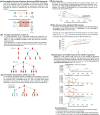What Lessons can Be Learned From the Management of the COVID-19 Pandemic?
- PMID: 40529997
- PMCID: PMC12171511
- DOI: 10.3389/ijph.2025.1607727
What Lessons can Be Learned From the Management of the COVID-19 Pandemic?
Abstract
During the COVID-19 pandemic (2020-2023), governments around the world implemented an unprecedented array of non-pharmaceutical interventions (NPIs) to control the spread of SARS-CoV-2. From early 2021, these were accompanied by major population-wide COVID-19 vaccination programmes-often using novel mRNA/DNA technology, although some countries used traditional vaccines. Both the NPIs and the vaccine programmes were apparently justified by highly concerning model projections of how the pandemic could progress in their absence. Efforts to reduce the spread of misinformation during the pandemic meant that differing scientific opinions on each of these aspects inevitably received unequal weighting. In this perspective review, based on an international multi-disciplinary collaboration, we identify major problems with many aspects of these COVID-19 policies as they were implemented. We show how this resulted in adverse impacts for public health, society, and scientific progress. Therefore, we propose seven recommendations to reduce such adverse consequences in the future.
Keywords: COVID-19; COVID-19 vaccination; epidemiology; mathematical modelling; public health.
Copyright © 2025 Quinn, Connolly, ÓhAiseadha, Hynds, Bagus, Brown, Cáceres, Craig, Connolly, Domingo, Fenton, Frijters, Hatfill, Heymans, Joffe, Jones, Lauc, Lawrie, Malone, Mordue, Mushet, O’Connor, Orient, Peña-Ramos, Risch, Rose, Sánchez-Bayón, Savaris, Schippers, Simandan, Sikora, Soon, Shir-Raz, Spandidos, Spira, Tsatsakis and Walach.
Conflict of interest statement
GQ, CC, RJ, NF, KS, GM, and AM are members of the Health and Recovery Group (HART, www.hartgroup.org/) based in the UK. TL is the director of The Evidence-Based Medicine Consultancy Ltd (www.e-bmc.co.uk/). GQ, RC, and WS receive general financial support from the Center for Environmental Research and Earth Sciences (CERES, www.ceres-science.com) but not specific to this research paper. MS is founder of www.ikigaitv.nl: positive psychology interventions for the general public, to enhance mental wellbeing, and co-founder of Great Citizens Movement (greatcitizensmovement.org). HR has stock shares in The Wellness Company, which is privately held. HR has depositions in two legal cases for individuals. MS served as expert witness of extra-parliamentary inquiry regarding the COVID-19 crisis handling in the Netherlands (2020). The remaining authors declare that they do not have any conflicts of interest.
Figures


References
Publication types
MeSH terms
Substances
LinkOut - more resources
Full Text Sources
Medical
Miscellaneous

